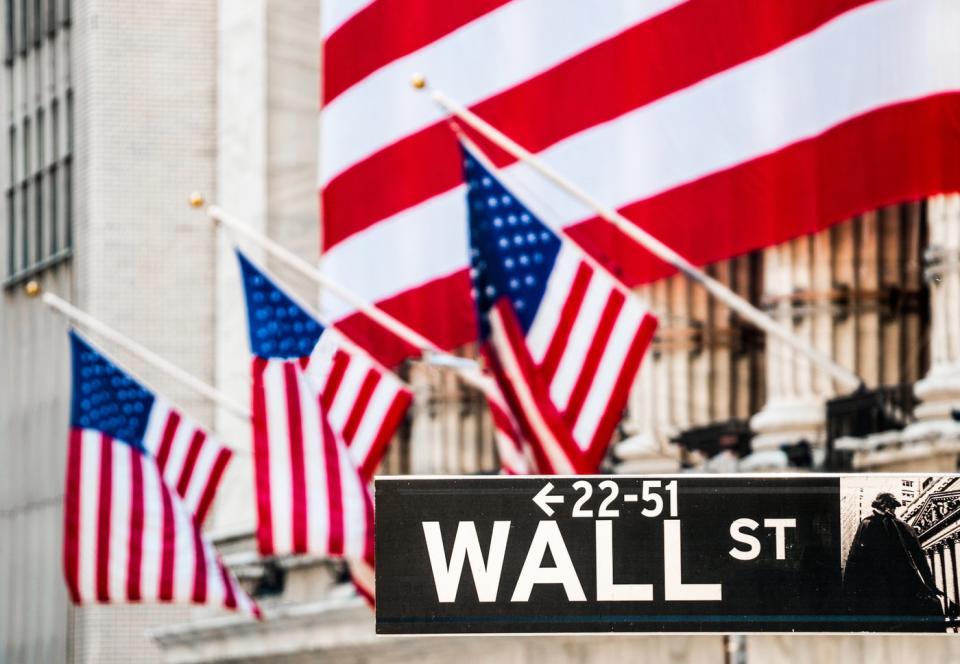For the last three decades, Wall Street has enjoyed no shortage of next-big-thing innovations. A little more than one week ago, the two hottest trends in the stock market collided: the rise of artificial intelligence (AI) and investors’ love of companies enacting stock splits.
After the close of trading on June 7, AI kingpin Nvidia (NASDAQ: NVDA) completed its previously announced 10-for-1 forward-stock split.
A split allows a publicly traded company to alter its share price and outstanding share count while having no impact on its market cap or operating performance. In Nvidia’s case, it increased the company’s outstanding share count by a factor of 10, while lowering its share price to 1/10th of what it previously was. For retail investors without access to fractional-share purchases with their broker, it’s a lot easier to buy a single share of Nvidia today than it was two weeks ago.

But more than just making its shares more nominally affordable for everyday investors, Nvidia’s second stock split since July 2021 is fueling speculation that its now-lower share price might lead to its inclusion in the iconic Dow Jones Industrial Average (DJINDICES: ^DJI).
When the Dow Jones was officially introduced on May 26, 1896, it contained 12 components, most of which were industrial companies. But over the last 128 years, it’s evolved into a multinational, 30-component index representative of many sectors and industries.
Does the third-largest largest company by market cap, Nvidia, have a reasonable chance of being added to the Dow in the foreseeable future? Let’s allow history to be our guide.
The case against including Nvidia in the Dow
Since May 1896, the Dow Jones Industrial Average has undergone 52 changes. By “changes,” I’m talking about the removal and/or addition of businesses to the index. These changes are overseen by S&P Dow Jones Indices, with the last one occurring a little over three months ago on Feb. 26, when e-commerce leader Amazon was added to the Dow and pharmacy chain Walgreens Boots Alliance was removed.
The first negative for Nvidia is that S&P Dow Jones Indices is trying to keep the Dow diverse, which is a lot tougher to do with only a 30-component index when compared to the S&P 500 (SNPINDEX: ^GSPC), which contains 500 of the largest publicly traded companies. The Dow already contains six technology stocks — Apple, Salesforce, Cisco Systems, IBM, Intel (NASDAQ: INTC), and Microsoft — which is more than any other sector.
The second red mark against Nvidia for inclusion is that size isn’t everything to the committee that oversees additions and subtractions to this ageless index. Even though Nvidia is nearly a $3 trillion company, and its graphics processing units utterly dominate in AI-accelerated data centers, the Dow has left a number of juggernaut businesses on the outside looking in.
Alphabet, Meta Platforms, and Berkshire Hathaway have market values of $2.19 trillion, $1.29 trillion, and $881 billion, respectively, and each offers a compelling case for inclusion. Nvidia’s market cap isn’t a selling point for S&P Dow Jones Indices.
The third and final issue that Nvidia would have to overcome is the lack of maturity for its core revenue driver, artificial intelligence. Understand that I’m not calling Nvidia an immature business in any way. However, companies included in the Dow are often chosen for their time-tested operating models and importance within the U.S. and/or global economy.
Even though sales projections for AI companies have ascended to the heavens, there hasn’t been a next-big-thing trend in 30 years that has avoided a bubble-bursting event. S&P Dow Jones Indices might be skittish about including a company whose primary growth driver could fall off in the quarters to come.
The single biggest reason Nvidia would be a smart addition to the Dow
But it’s not all red marks against inclusion for Nvidia. The fact that the Dow Jones Industrial Average is weighted by share price and not by market cap absolutely works in its favor.
For instance, the S&P 500 comprises 500 companies, each of which have their own respective weightings. The bigger the business, in terms of market cap, the more weighting it’s going to have in the S&P 500. That’s why a 1% move in the largest component, Microsoft ($3.22 trillion market cap), is going to have far more bearing on moves in the S&P 500’s point value than if the index’s smallest component, the regional bank Comerica ($6.2 billion market cap), moves by 1%.
The Dow’s point value is derived entirely by the aggregate share price of its 30 components. Since UnitedHealth Group has a share price of almost $500, it has the highest weighting within the Dow Jones Industrial Average. At roughly $120 a share, Nvidia would only be the 22nd most-influential Dow component.
The underperformer with the lowest share price and least influence over the Dow right now is (drumroll) … Intel! The central processing unit (CPU) giant ended the June 11 session at less than $31 per share.
A reasonable argument can be made that Nvidia’s chips are both the present and the future, in relation to Intel’s largely legacy-driven CPU operations. Even though Intel is launching its own AI-accelerating chip, the Gaudi 3, during the third quarter, it hardly even registers in market share for the high-compute data center sector behind Nvidia and Advanced Micro Devices.
Many times, there isn’t a logical one-for-one replacement when arguing whether or not a company should be included in the Dow Jones Industrial Average. This would be about as no-brainer of a swap as there’s been in some time.


The verdict: Will Nvidia be added to the Dow?
Taking into account the historic factors that have led to 52 changes in the Dow Jones spanning 128 years, I’m inclined to believe that S&P Dow Jones Indices will eventually (key word!) swap out Intel for Nvidia, but is in absolutely no rush to do so.
On a nominal-dollar basis (i.e., excluding the dividends Intel has paid to its shareholders), shares of Intel have declined by 19% since it was added to the Dow on Nov. 1, 1999. That’s nearly 25 years of negative returns, while the Dow has gained 264% over the same span. S&P Dow Jones Indices absolutely wants businesses that’ll continue to grow and lift the Dow over the long run represented in the index. Intel simply hasn’t shown that it can do that.
Don’t get me wrong, I’m an Intel shareholder and believer that its foundry services segment and AI initiatives will be long-term winners. But as a Dow component, it’s been abysmal.
Although Nvidia is a logical replacement, there’s genuine concern that the AI bubble is going to burst sooner rather than later. Just as history has helped predict what stock(s) might be included in the Dow, it has shown us that every next-big-thing innovation has fallen on its face early in its growth cycle.
Investors have a terrible habit of overestimating the uptake of new technologies, and AI is a long shot to break this trend. S&P Dow Jones Indices is likely to be reluctant to add Nvidia to the index until it’s certain that AI has matured as a technology.
Once this maturation process has taken place and businesses have a clue about how to deploy AI solutions to their advantage, Nvidia has a very good chance of displacing Intel.
Should you invest $1,000 in Nvidia right now?
Before you buy stock in Nvidia, consider this:
The Motley Fool Stock Advisor analyst team just identified what they believe are the 10 best stocks for investors to buy now… and Nvidia wasn’t one of them. The 10 stocks that made the cut could produce monster returns in the coming years.
Consider when Nvidia made this list on April 15, 2005… if you invested $1,000 at the time of our recommendation, you’d have $808,105!*
Stock Advisor provides investors with an easy-to-follow blueprint for success, including guidance on building a portfolio, regular updates from analysts, and two new stock picks each month. The Stock Advisor service has more than quadrupled the return of S&P 500 since 2002*.
*Stock Advisor returns as of June 10, 2024
Suzanne Frey, an executive at Alphabet, is a member of The Motley Fool’s board of directors. John Mackey, former CEO of Whole Foods Market, an Amazon subsidiary, is a member of The Motley Fool’s board of directors. Randi Zuckerberg, a former director of market development and spokeswoman for Facebook and sister to Meta Platforms CEO Mark Zuckerberg, is a member of The Motley Fool’s board of directors. Sean Williams has positions in Alphabet, Amazon, Intel, Meta Platforms, and Walgreens Boots Alliance. The Motley Fool has positions in and recommends Advanced Micro Devices, Alphabet, Amazon, Apple, Berkshire Hathaway, Cisco Systems, Meta Platforms, Microsoft, Nvidia, and Salesforce. The Motley Fool recommends Intel, International Business Machines, and UnitedHealth Group. The Motley Fool has a disclosure policy.
Is Nvidia Going to Be Added to the Dow? Here’s What 128 Years of History Suggests Will Happen. was originally published by The Motley Fool
Source Agencies

